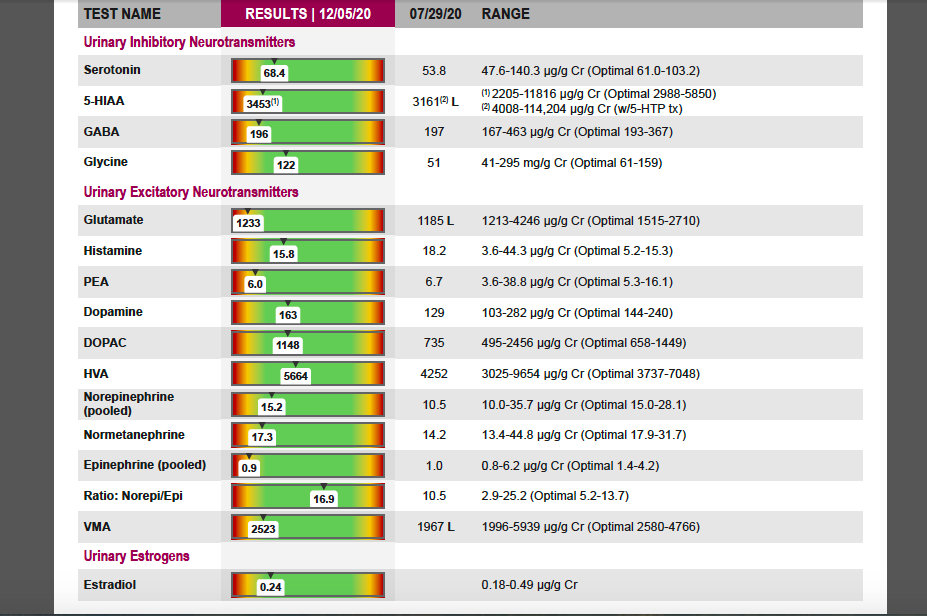I'm very fortunate to have worked for over a decade with both his ZRT and Genova labs, which offer a variety of integrative functional testing, ranging from hormone testing, G.I. functional markers, food reactivity testing etc. I look back to the last 20 years with a sense of wonder at the technology and methodology of the labs, which have increasingly become more precise, and start measuring new metabolites which help shed light on some chronic health issues.
When I think back over the last 5 years, of all the new testing that has come online, I would have to say that"neurotransmitter" testing is probably the one lab that has given me the most new insights.
There is a lot of confusion and misrepresentation of the testing. First of all, I hesitate to use the term "neurotransmitter". Neurotransmitters are types of biological molecules that carry signal and information between cells and tissues. We think of them as being brain-based, which is obviously 1 of the areas where we find them, but they are found in many other tissues throughout our bodies, especially the gut which holds 95% of all major neurotransmitters and neuro hormones. (Serotonin and melatonin for example). The neurotransmitter panel that we use in reality measures a variety of molecules involved in signaling: this will include traditionally considered neurotransmitters as well as all of their metabolites, neuro-hormones, neuro-immune molecules such as histamine metabolites. The test uses urine samples since all of the metabolites are excreted through the kidneys. While it does not directly measure the neuro- signaling molecules of the central nervous system (those would be separated from the rest of the body in specific neural tracts via the blood brain barrier), research has shown a strong mirroring pattern between central nervous system and G.I. neuro-metabolites. The test is complex and has to be carefully interpreted to understand its significance, in particular what factors influence imbalances in neuro- signaling molecules, thus leading to use best practice interventions to bring about balance. It has a broad spectrum of application in the area of chronic mood imbalances, chronic pain, as well as chronic functional neurological symptoms.


